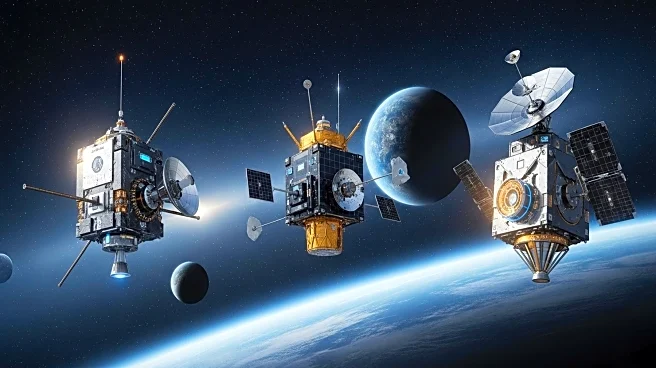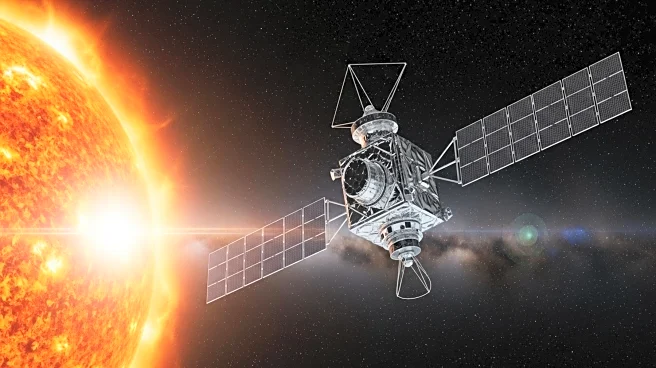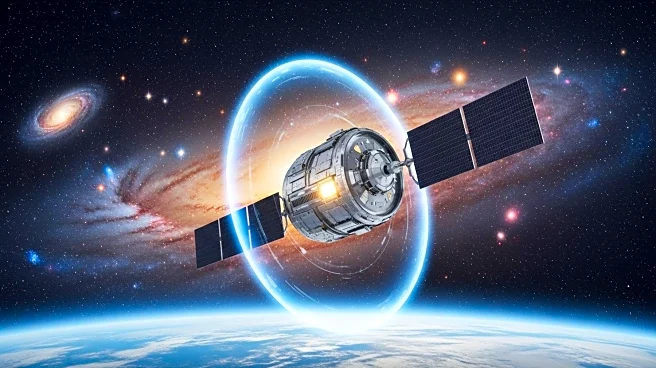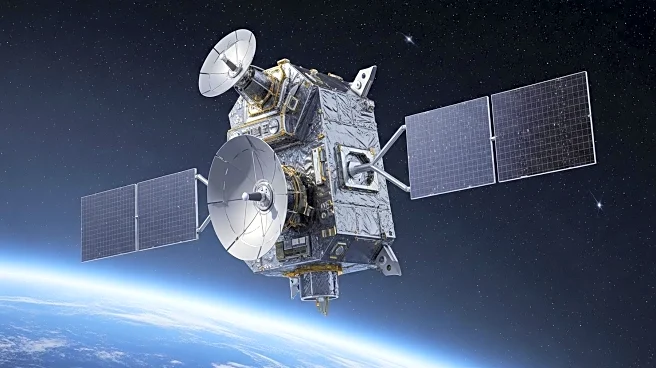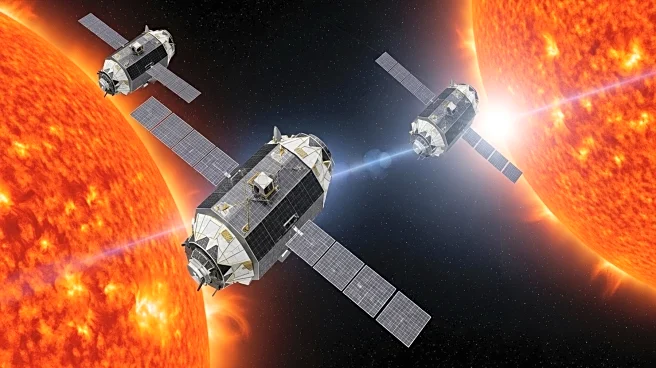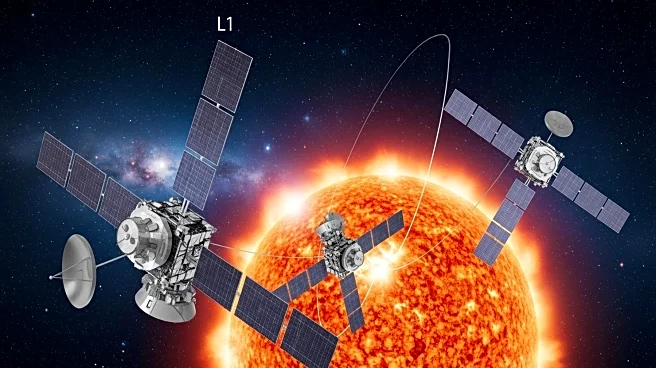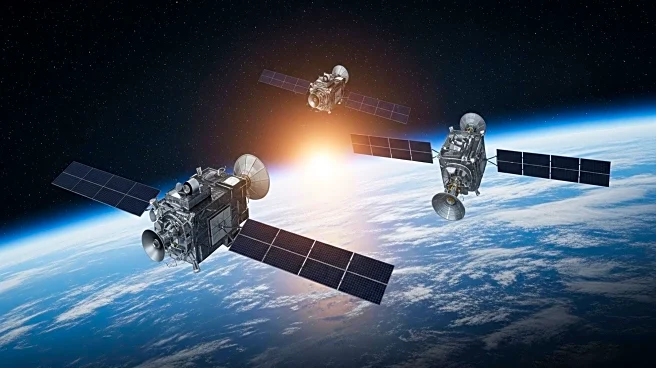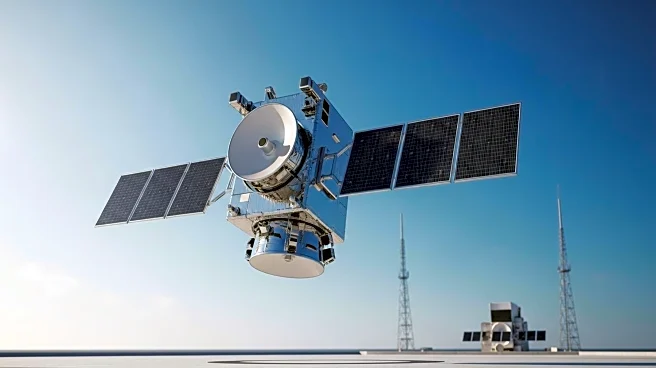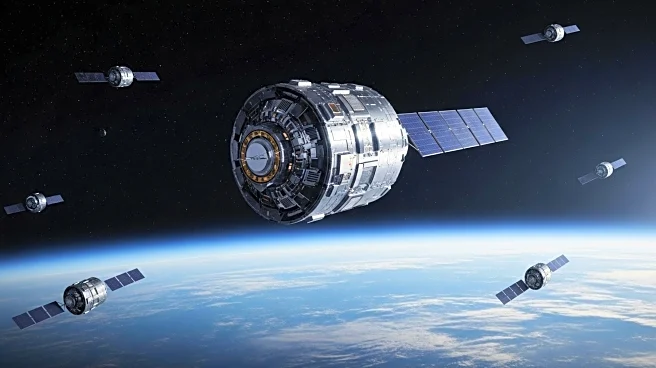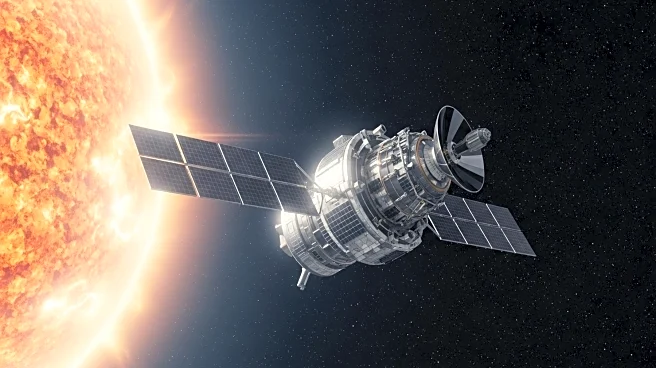What's Happening?
SpaceX is set to launch three space weather probes on September 24, 2025, from NASA's Kennedy Space Center in Florida. The mission includes NASA's Interstellar Mapping and Acceleration Probe (IMAP), the Carruthers Geocorona Observatory (CGO), and NOAA's Space Weather Follow-on-Lagrange 1 (SWFO-L1). These probes aim to study the sun's energy and particles, the Earth's exosphere, and monitor solar storms. The launch will occur at the Earth-sun Lagrange Point-1 (L1), a stable gravitational spot 930,000 miles from Earth. The Falcon 9 rocket will deploy the spacecraft into interplanetary transfer orbit, enhancing our understanding of space weather and its impacts on Earth.
Why It's Important?
The launch of these probes is crucial for advancing knowledge of space weather, which can significantly affect Earth's technological infrastructure. By studying the heliosphere and cosmic radiation, IMAP will provide insights into how solar energy interacts with our solar system. CGO's focus on the Earth's exosphere will help scientists understand space weather's effects on our planet. SWFO-L1 will serve as an early warning system for solar storms, protecting critical infrastructure and industries reliant on technology. This mission supports efforts to safeguard against disruptions caused by space weather phenomena.
What's Next?
Following the successful deployment, the three spacecraft will travel to the L1 point to begin their scientific missions. The data collected will be analyzed to improve predictions of space weather events and their potential impacts on Earth. Stakeholders, including NASA and NOAA, will use this information to enhance protective measures for technological systems. The mission's findings may influence future space exploration strategies and the development of technologies to mitigate space weather risks.
Beyond the Headlines
This mission highlights the growing importance of understanding space weather in the context of increasing reliance on technology and space exploration. The collaboration between NASA and NOAA underscores the need for comprehensive monitoring systems to anticipate and respond to solar events. The data gathered could lead to advancements in space weather forecasting, benefiting industries such as telecommunications, navigation, and power grids.

